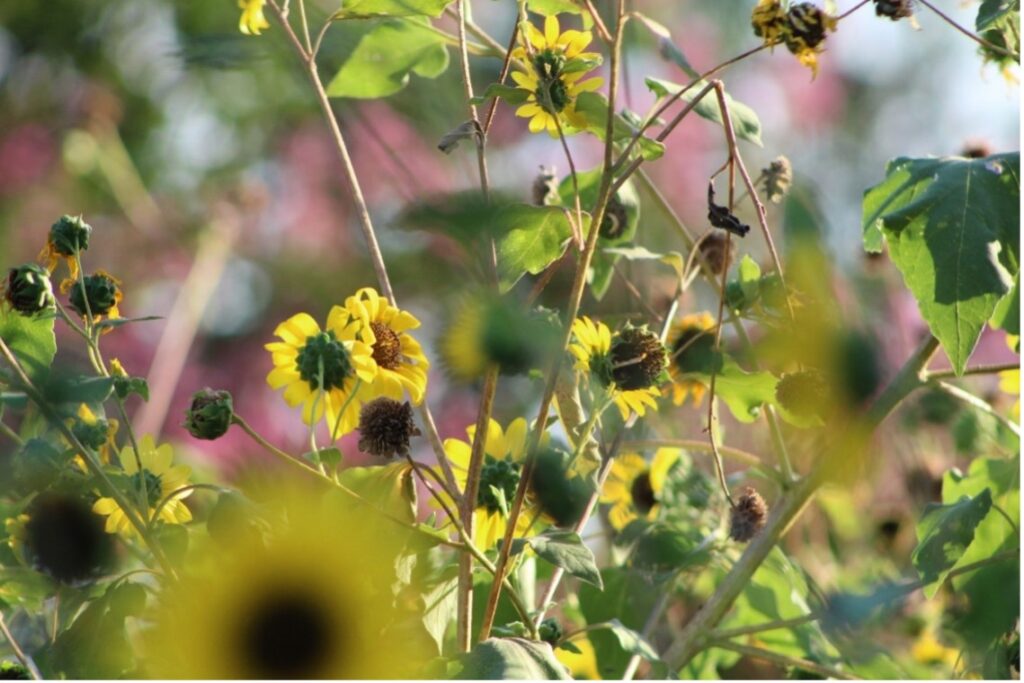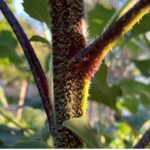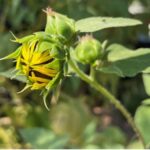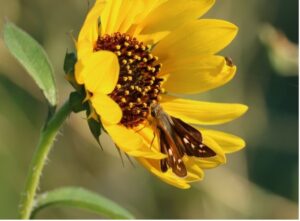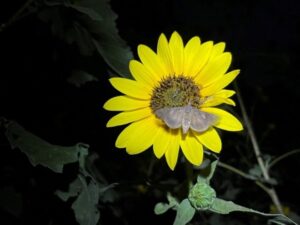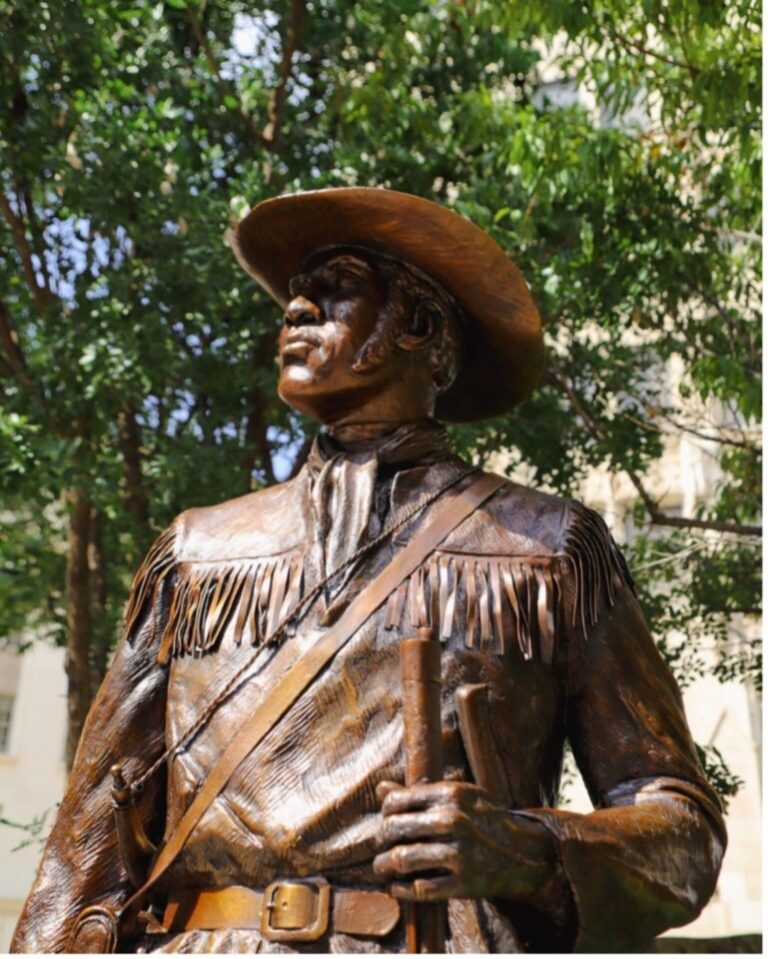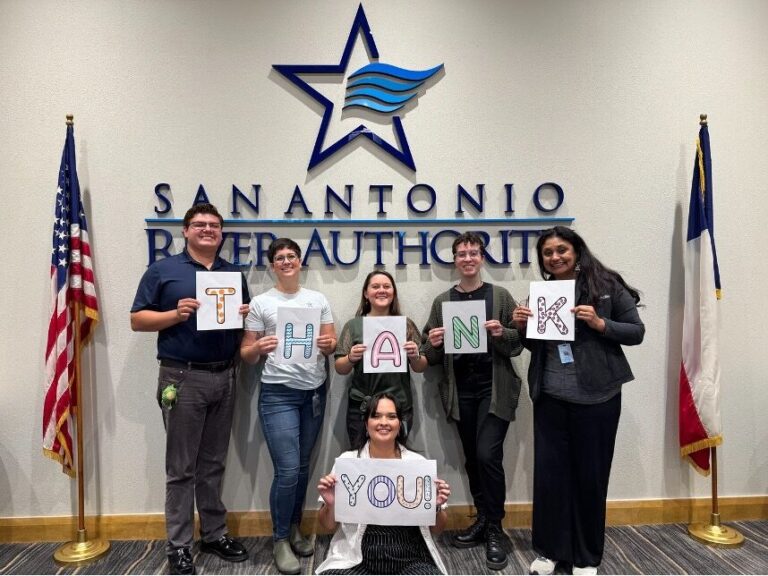Sunflowers with dozens of blooms under a sunny sky are one of the many signs of summer.
What better way to signal summer than with sunflowers! Known around the world by their vibrant, showy yellow flowers and as a symbol for positivity and happiness, sunflowers do indeed inspire joy and are beneficial in our ecosystems of the San Antonio River Watershed. The most common species of sunflower found in our watershed is the aptly named Common Sunflower (Helianthus annuus).
Now, as many sunflowers are finishing their bloom period and starting to decline, let’s look at the various events during the life of a native sunflower and discover some of their benefits even after they’re done blooming!
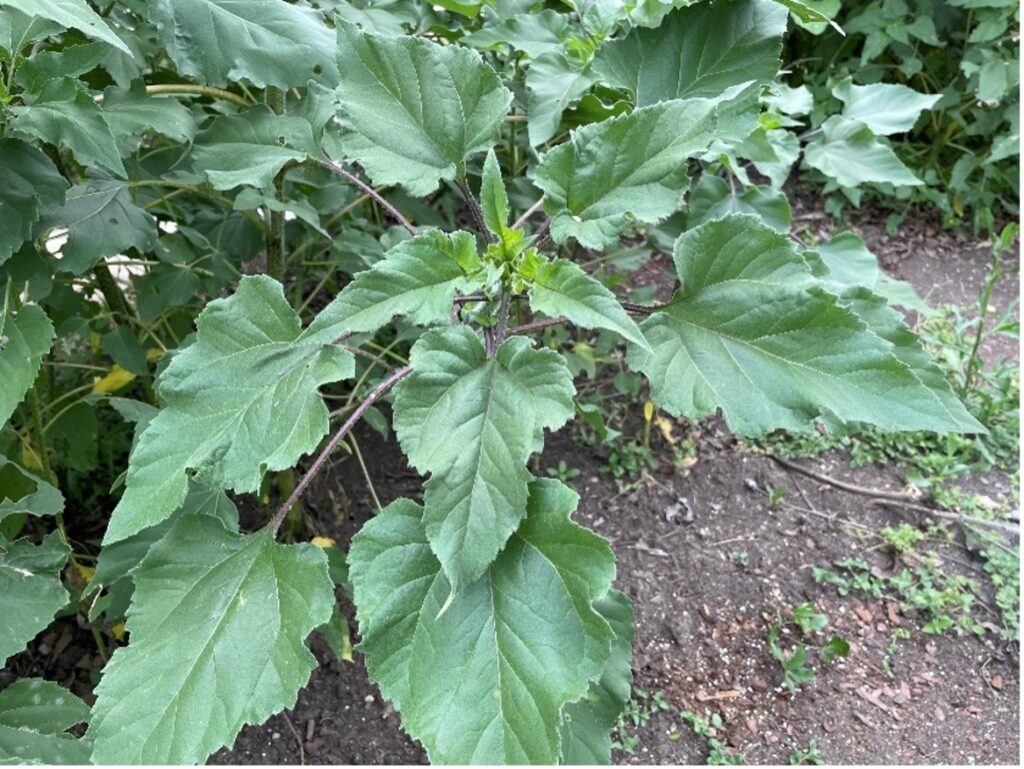
A sunflower shoot with large, broad leaves that have slightly serrated edges.
As cooler weather wanes in spring, sunflowers sprout from the ground. Even with sparse rain, sunflowers can grow quickly, often to an impressive height of 6-10 feet. Our native sunflowers are drought tolerant and a good choice for landscapes that are watershed-wise!
In the early stages of growth, the stems are thin and straight. Later, they become sturdier to support the weight of multiple blooms and branches. If there are a lot of shoots growing in a tight space, a good time to thin them out is when they are still under 12 inches; potting some of the extras could be a great gift for a friend!
Left: Stout stems are hairy and as they mature, become woody to support the weight of dozens of blooms on a single plant. Right: Sunflower buds develop with yellow ray flowers, often referred to as the petals, peeking out.
Even before the blooms open, there is an array of life amongst the leaves. You may see grasshoppers who relish the many large leaves, leaving large holes in some and hiding amongst others to avoid predation from birds or lizards. Other small arthropods like ichneumon wasps, snails, beetles, or ants may also be seen traversing the growing plant for food or shelter.
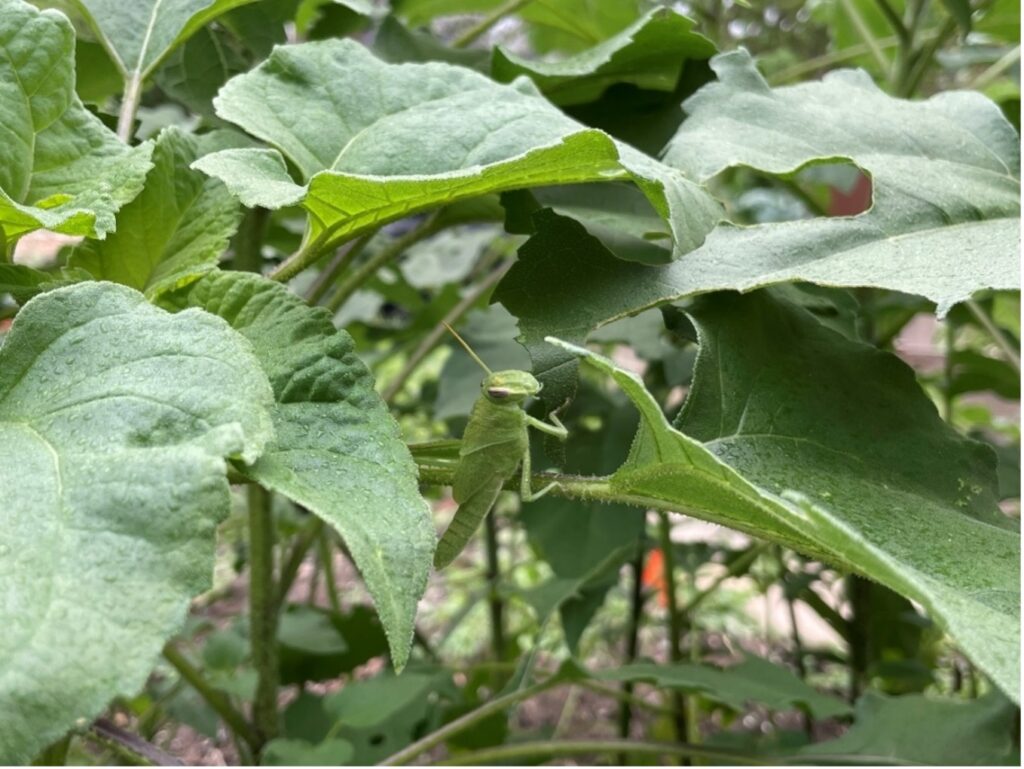
Hide and seek! A green, immature (nymph) grasshopper eats a sunflower leaf.
When in bloom, sunflowers provide nectar and pollen which attract pollinators like butterflies, beetles, bees, and wasps. Each individual flower may not last very long, but the plant itself may bloom for more than three months. In some areas, moths may favor sunflowers when they emerge at dusk.
Left: A skipper butterfly nectars on a sunflower bloom. Right: A moth at dusk flutters over a sunflower to eat nectar while helping to distribute its pollen.
Sunflowers are a larval host plant for Bordered Patch butterflies and Sunflower moths. Bordered Patch caterpillars are often seen in large quantities in June and July devouring the leaves! Sunflowers are essential to their life cycle, and after the butterflies metamorphose, they in turn help the plant produce seeds through pollination.
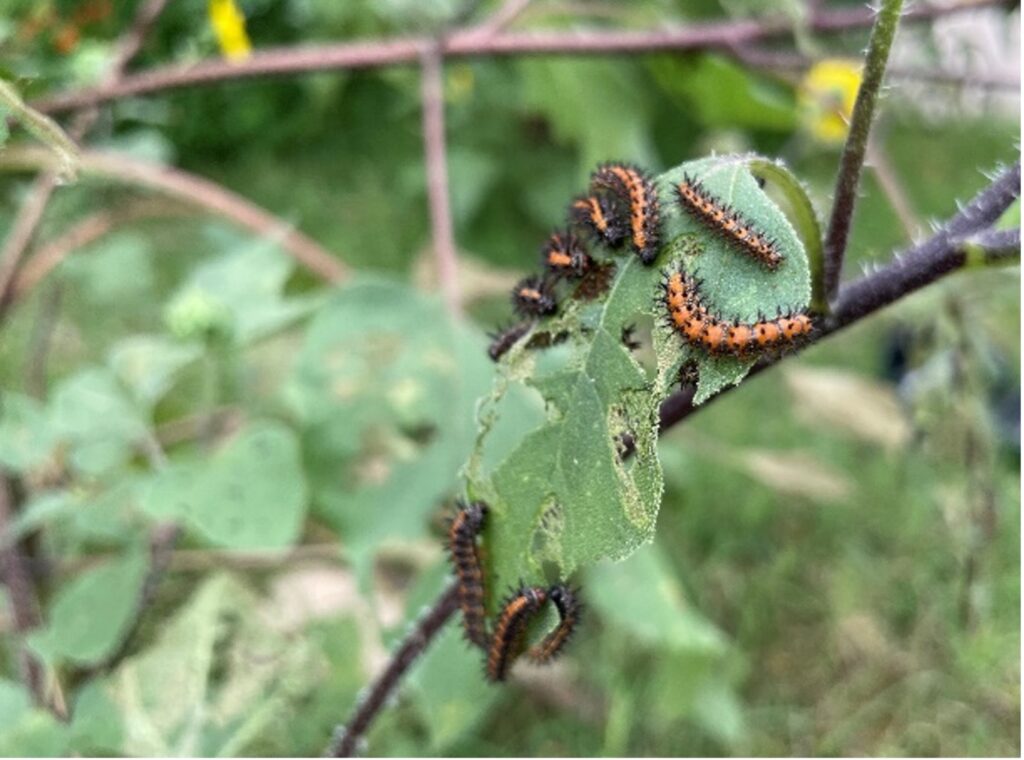
Bordered Patch caterpillars devour a sunflower leaf.
Just as the caterpillars were able to find food from the sunflower, the sunflower provides a similar opportunity for wasps, who are vital to healthy populations of insects. When caterpillars are grouped together in large numbers, wasps can be seen eating them from the sunflower leaves—because everyone’s got to eat!
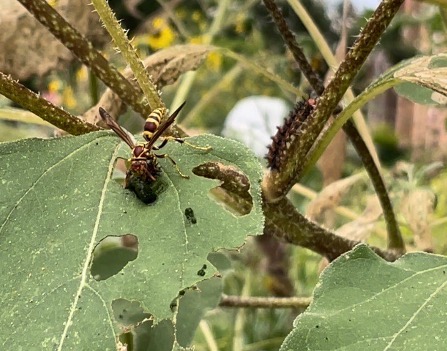
In early summer, some flowers have finished blooming, and even while new flowers open, the earlier ones will start producing seed. Sunflower seeds are important for seed-eating birds and a special favorite of Lesser Goldfinches and House Finches which can be seen eating seeds directly off the flower head, oftentimes hanging upside down to get to them!
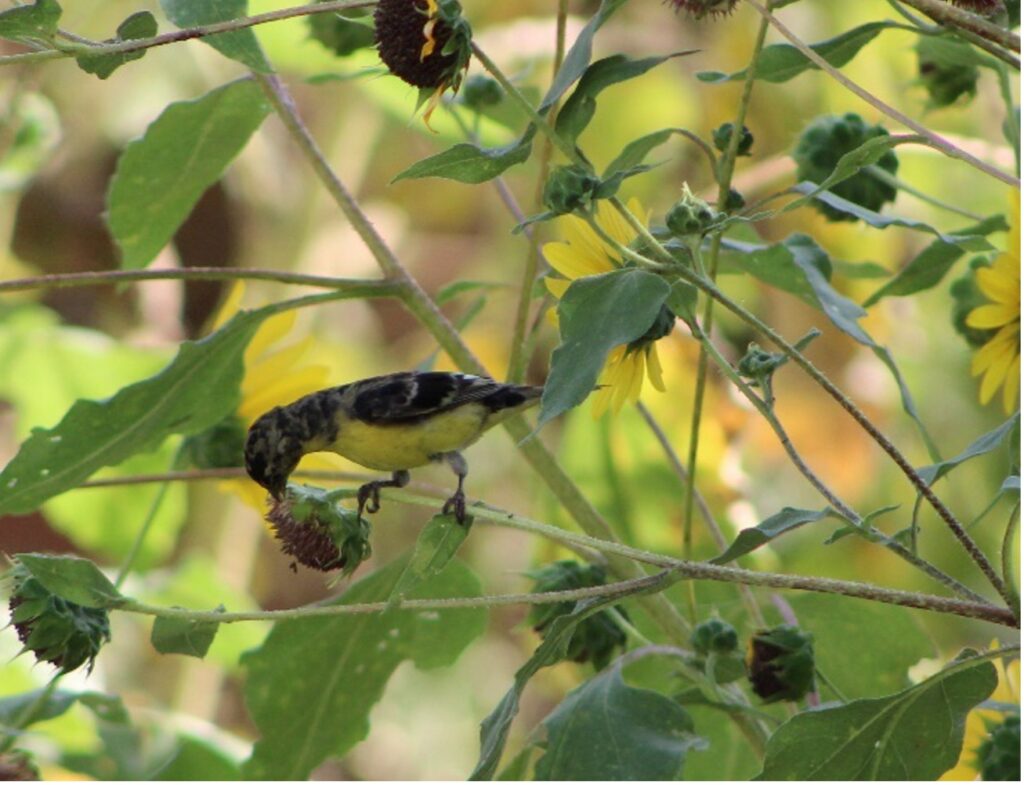
A lesser goldfinch perched on a sunflower seed head.
Sunflowers are annuals and only live for one growing season. Bloom time can vary, based on conditions like rain or soil type, but after blooms have stopped, the plant will become ashen, appearing to be lifeless.
Although the plant itself has died, there are still benefits for it to provide! If left intact and in place, the old flower heads may still harbor seeds for birds to find in the fall and winter seasons. The plant itself provides a good structure for small birds, lizards, and other small animals; they may use it to perch, for camouflage and/or to seek shelter from predators, or for nesting or pupating!
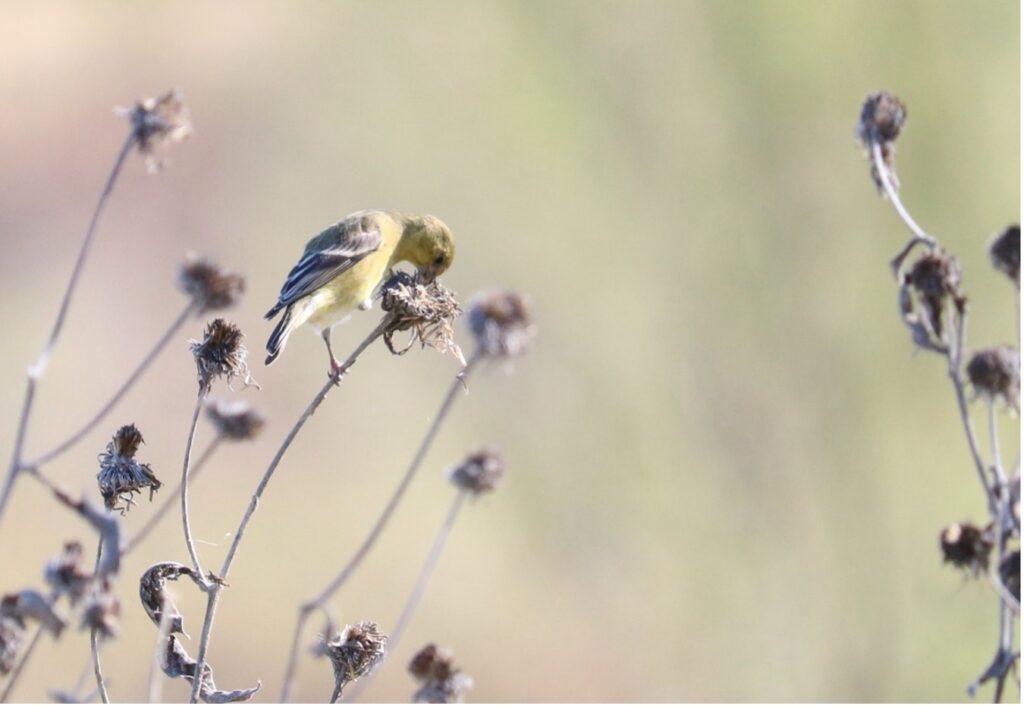
Native plants like our common sunflowers provide soil stability, leaves for grasshoppers and caterpillars to eat, sap for ants to harvest, buffets for wasps, nectar and pollen for beetles and butterflies, and seeds for birds. Even after a lively year, the sunflower is usually able to produce enough seeds for more to grow in the early spring to start the cycle again. So, next time you see sunflowers, say thanks for all they provide for our local ecosystems!

